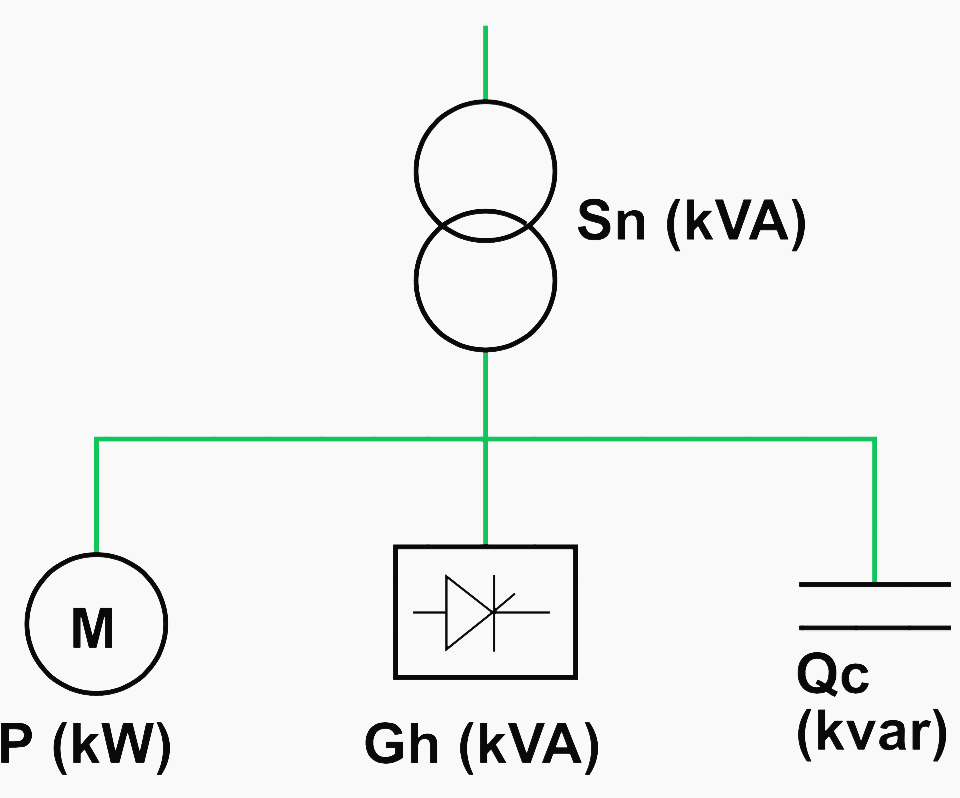Capacitor selection based on operating conditions
The operating conditions have a great influence on the life expectancy of capacitors. For this reason, different categories of capacitors, with different withstand levels, must be selected according to operating conditions.

Capacitors must be selected in function of the following parameters:
- Ambient Temperature (°C)
- Expected over-current, related to voltage disturbances, including max. sustained over voltage
- Maximum number of switching operations/year
- Requested life expectancy
IMPORTANT! Capacitors are particularly sensitive to harmonics. Depending on the magnitude of harmonics in the network, different configurations can be adopted.
Different ranges with different levels of ruggedness are proposed:
- SDuty: Standard duty capacitors for standard operating conditions, and when no significant non-linear loads are present.
- HDuty: Heavy duty capacitors for difficult operating conditions, particularly voltage disturbances, or when a few non-linear loads are present. The rated current of capacitors must be increased in order to cope with the circulation of harmonic currents.
- Energy: Specially designed capacitors, for harsh operating conditions, particularly high temperature.
- Capacitors with detuned reactors: applicable when a significant number of non-linear loads are present.
- Tuned filters: when non-linear loads are predominant, requesting harmonic mitigation. A special design is generally necessary, based on on-site measurements and computer simulations of the network.

Since the harmonics are caused by non-linear loads, an indicator for the magnitude of harmonics is the ratio of the total power of non-linear loads to the supply transformer rating.
This ratio is noted NLL, and is also known as Gh/Sn:

Example //
- Supply transformer rating: Sn = 630 kVA
- Total power of non-linear loads: Gh = 150 kVA
- NLL= (150/630) × 100 = 24%
| Title: | Guide for the Design and Production of LV Power Factor Correction Cubicles – Panel Builder Guide by Schneider Electric |
| Format: | |
| Size: | 7.70 MB |
| Pages: | 76 |
| Download: | Right here | Video Courses | Membership | Download Updates |



thanks you.
Thanks allot
If you use an Elspec product such as the Activar or Equalizer, you can eliminate many of the factors you have listed in selecting the correct system and capacitors.
As the world market is becoming more familiar with our advanced technology, its a no brainer why the majority of OEM’s are purchasing their systems (Private Labeled of course) from Elspec.
Eliminate the guess work, eliminate failures and embarrassment and create a stable atmosphere within your power quality division and recommend Elspec.
Check out the line of Elspec Power Quality Analyzers as well. There are no other meters that are comparable or even close.
It is interest to read your articles. Thank you very much. I am electrician too. I was want to invite you to my website highvoltagent.pro. You can see here many interest information, but it is russian language. So, if you want, welcome. Sorry about my english.
The cooling on page 54 is incorrect. Putting the cabinet under vacuum has a problem. When the filter blocks up, the air will be sucked in through gaps. This air is unfiltered. A pressurized system, with filters is recommended. All air entering is filtered and as the cabinet is pressurized only clean air comes out of any gaps or holes.
Tranks you, It´s wonderfull